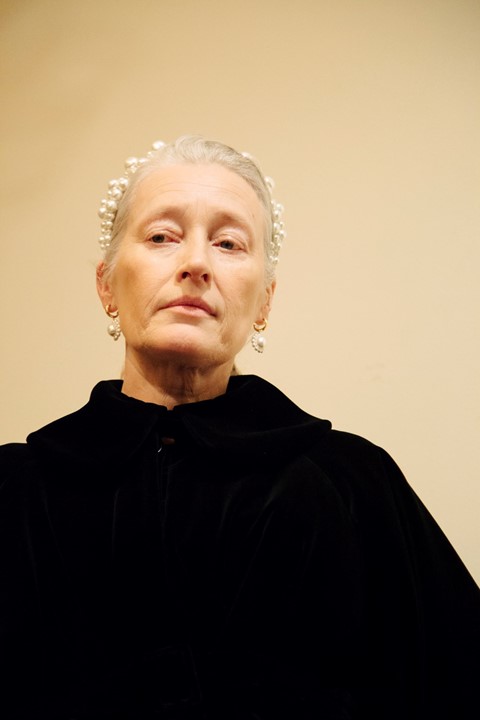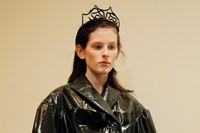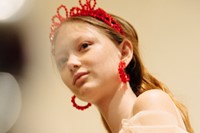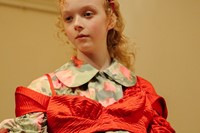“The first time I saw her work it felt so personal, I just felt like my feelings were down on a page,” the designer tells AnOther, in the wake of the launch of her Louise Bourgeois-inspired earrings
Within Simone Rocha’s weird and wonderful universe, what at first glance appears delightfully pretty inevitably reveals a more subversive edge. A smocked tulle dress might be punctured with blood-red bows, a coat with floral embroidery topped with a mourner’s veil, or a frou-frou gown in pastel pink styled with a pair of lace-up combat boots. Her clothes take tropes conventionally coded as feminine and toughen them up; make them dangerous. It’s little surprise, then, that one of her longtime guiding lights is the late artist Louise Bourgeois, whose renderings of the abject female body are as horrifying as they are endlessly compelling.
“I think even if her work is confrontational, to me they are still so beautiful,” says Rocha, and it’s this dark allure that she’s strived to capture in her recent collaborations with Bourgeois’ estate: first with the dresses in her most recent Autumn/Winter collection variously printed and embroidered with Bourgeois’ drawings of spider’s webs, and this week with the earrings she has produced in collaboration with Hauser & Wirth based on Bourgeois’ works that recall stuffed, hanging bodies.
Rocha remembers the first time she encountered Bourgeois’ work with absolute clarity: at an exhibition titled Stitches in Time at Dublin’s Irish Museum of Art. “The first time I saw her work it felt so personal,” she says. “I just felt like my feelings were down on a page: the words, the colours, the hand stitching. I was really blown away. It was like my teenage diaries, but in a more beautiful form, obviously.”
Despite Bourgeois’ deeply personal, at times even directly autobiographical, works being inspired by moments of fear and unhappiness provoked by her volatile father, Rocha’s was a firmly happier childhood. There were other shared circumstances which helped Rocha get inside Bourgeois’ head: in particular that both of them grew up surrounded by textiles, in Bourgeois’ case assisting her parents with their tapestry restoration business, and in Rocha’s as the daughter of Chinese-Irish fashion designer John Rocha.
With clothing as something of a second language for Rocha, it makes sense that she would look to art for inspiration, but how do you take the eerie forms of Bourgeois’ work and translate them into desirable clothes? “It’s actually easier than it seems,” Rocha explains. “It’s all there: the colours, the shapes, the textures, whether that’s the suspense of a hanging garment from the Cell series translated into a paper trench coat, or the idea of the ‘Maman’ spider weaving lurex onto tulle to make the body of a dress.”
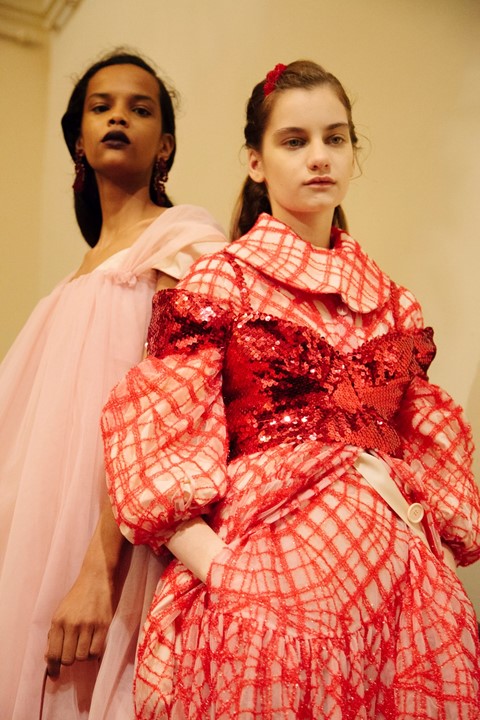
With the earrings, she was trying to find a way to mimic Bourgeois’ suspended bodies in an item of clothing; elsewhere, she drew parallels between the threatening spider figure that looms large in Bourgeois’ imagination, nicknamed ‘Maman’. The spider is a weaver, like Bourgeois’ mother, but with a predatory, sinister undercurrent, the essence of which is captured in Rocha’s own forays into the realm of the Gothic.
“I believe she said that clothing was also about what you are hiding, which I like,” Rocha adds. “It’s protection, a uniform. I think her work is an amazing lesson in how a moment in time or a feeling can be captured in a single artwork, or an item of clothing.”
Rocha’s relationship with the art world is well documented: she’s an avid collector, with her collection split between her home and office in east London and including works by artists like Michael Borremans and Roni Horn, while her stores on Mount Street in London and Wooster Street in New York both display artworks from Rocha’s collection alongside her designs, including works by Robert Rauschenberg and Ren Ri.
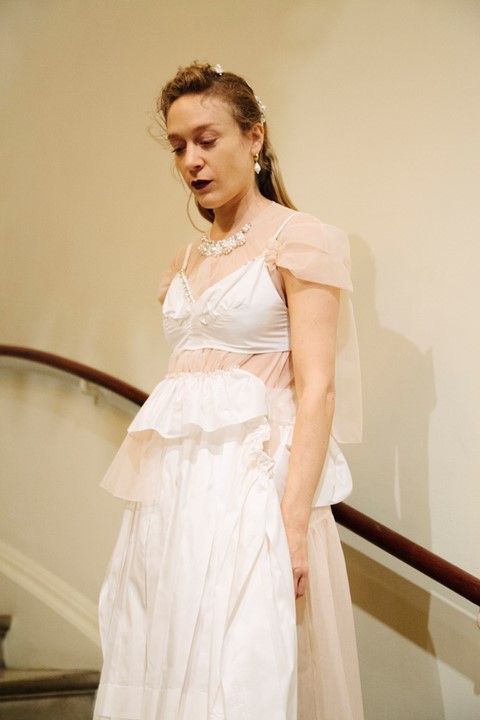
Despite early flirtations with becoming an artist, she’s satisfied with having chosen the path of fashion design: even if there isn’t the same tactile relationship between the maker and the product, she gets to enjoy seeing women wear her clothes every day. “Once the collection is in full production I can feel more detached, but the handwriting is there, and our samples are nearly exactly the same as the original garment made in the sample room,” Rocha explains. “But the fact is that I’m a designer, not an artist, so everything I do is multiplied and has a functionality. It has to be worn on the body.”
Even if she isn’t going to be venturing into the world of art-making any time soon, would she ever open a Simone Rocha gallery? “Imagine!” Rocha laughs. “No way, I wouldn’t be interested in the commerce or the politics of it. I also wouldn’t like the pressure of everything.” If she ever changes her mind, you can be sure there would be a long line of customers ready to see her apply the Simone Rocha touch to the world of art. For now though, you can enjoy a little taster of Rocha’s curatorial instincts by hanging it from your ear.
